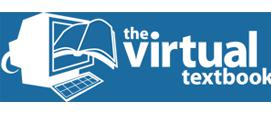Standard Form
Students are required to be proficient in converting large and small numbers into standard form and vice versa and to be able to interpret and compare numbers represented in standard form. This resource list is designed to support the teaching and learning of standard form, providing a variety of resources and contexts.
Visit the secondary mathematics webpage to access all lists.
- ALL
- Textbook
- Group work
- Activity sheet
Textbook
Indices and Standard Form
The text book Indices and Standard Form contains explanations, examples and exercises beginning by revising representing numbers in index notation, multiplying numbers in index form and dividing numbers in index form before explaining in more detail the laws of indices. Representing numbers using negative indices is covered next before moving on the representing numbers using standard form. Representing numbers in standard form on a calculator is explained, which is important to cover. The exercise contains a variety of questions in which students have to say whether the statement is true or false, questions in context, with examples being taken from science.
The activity sheet has three useful activities. In one, Bode’s Law is explored. The second looks at relative distances of planets from the sun in an activity exploring the usefulness of the use of standard form when measuring. The third is a game in which players are required to rules that determine which numbers are largest.
Group work
Estimating Length Using Standard Form N4
In this resource, students use the context of measuring length to interpret decimals using metric units, estimate lengths of real life objects and interpret standard form. The resource suggests activities to be carried out using many useful measurements, both very large and very small. To support the suggested tasks there is a series of cards. The first contains pictures of objects for which students have estimate lengths and distances, a set of cards containing measurements in metres using ordinary numbers, a set of cards with the measurements represented in standard form and a set of cards to be used to compare distances.
This short video explains how the resources are intended to be used.
Activity sheet
Number
This resource contains two activities useful as inspiration for teachers when planning this topic. Big Numbers suggests that students work in small groups to discuss how ‘big’ is ‘big’ and is designed to develop confidence when dealing with numbers bigger than a thousand.
Standard Form is a resource providing suggested activities designed to expose and to discuss common misconceptions associated with standard form and common mistakes when interpreting standard form displayed on a calculator.
Standard Form
This interactive excel file from The Virtual Textbook provides a series of large and small numbers to change into and from standard form. The file also provides the opportunity to add, multiply, subtract and divide numbers expressed in standard form without using a calculator.
There are also sheets of questions which may be suitable for duplication for classroom use.





